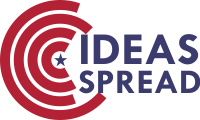The "Four Motions" Teaching Reform Thought Based on the Law of Transmits Knowledge
Abstract
Transmits knowledge includes four modes: from tacit knowledge to tacit knowledge, from tacit knowledge to explicit knowledge, from explicit knowledge to explicit knowledge, and from explicit knowledge to tacit knowledge. Combining the laws of transmits knowledge with the practice of teaching reform, the "Four Movements" teaching reform thought has been proposed. This thought aims to achieve effective teaching goals efficiently through interaction, vivid, action and first-mover.
References
[2] Feng, Y., & Lü, H. J. (2025). The impact mechanism of vertical and horizontal leadership distribution on team knowledge transfer efficiency. Journal of Management, (4), 646–658.
[3] Tian, H. S., & Ma, J. (2025). On the construction of an autonomous knowledge system in curriculum and pedagogy. Educational Research, (5), 4–15.
[4] Wang, Z. P. (2019). A study on Zhuge Liang's military thought. Journal of Neijiang Normal University, (5), 95–101.
[5] Wang, R. X., & Yu, J. F. (2024). Educational views in Wang Fu’s Qian Fu Lun · Zan Xue. Journal of the History of Education, (3), 64–71.
[6] Zhang, J. C., & Xu, Z. L. (2025). Tao Xingzhi's view of students: Formation, connotation, and contemporary value. Journal of Lishui University, (3), 115–122.
[7] Yao, Y. R. (2024). On Xunzi's educational thought. Science Consultation, (6), 1–4.
[8] Wang, R. L. (2024). A correct understanding of three ideological viewpoints of Ye Shengtao. Basic Education in China, (12), 48–50.
[9] Zhang, Q. Q. (2025). On Mencius' philosophy of history. Journal of Yunnan University (Social Sciences Edition), (2), 37–57.
[10] Li, J. (2024). Action outweighs words: Laozi's doctrine of action from the perspective of “discrimination between speech and action.” Journal of University of Chinese Academy of Social Sciences, (5), 31–42.

This work is licensed under a Creative Commons Attribution 4.0 International License.
Copyright for this article is retained by the author(s), with first publication rights granted to the journal.
This is an open-access article distributed under the terms and conditions of the Creative Commons Attribution license (http://creativecommons.org/licenses/by/4.0/).








1.png)

















